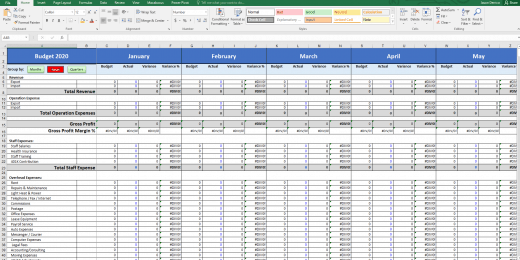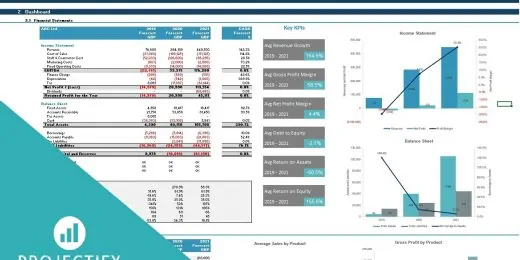Revolutionize Your Approach to Control Self Assessment

Revolutionize your control self-assessment by adopting cutting-edge strategies. Embrace innovation to enhance internal process evaluations.
Control self-assessment (CSA) is a critical element in an organization’s internal control system that enables businesses to ensure compliance, manage risks, and enhance operational effectiveness. By reevaluating traditional CSA methods and integrating innovative technologies, companies can gain real-time insights and streamline their risk management practices.
This proactive approach empowers employees at all levels to engage in the assessment process, fostering a culture of continuous improvement and accountability. A refined CSA strategy can lead to better decision-making, drive efficiency, and support strategic objectives. Businesses poised to transform their self-assessment approach can expect not only to meet industry standards but to set new benchmarks for excellence in governance, risk, and compliance.
Evolving Landscape Of Risk Management
The world of risk management never stands still. Techniques and strategies evolve with new challenges. Companies now look to blend risk management into all aspects of their business. This blending helps stay ahead of potential issues. It is not just about responding to risks anymore. It is about predicting and managing them proactively.
The Rise Of Self-assessment
Self-assessment has become a key player in modern risk management. Businesses empower their teams to evaluate and report on potential risks. This hands-on approach serves two main purposes. First, it helps identify risks early. Second, it spreads responsibility across the organization. Every team member becomes a risk manager. This way, no stone goes unturned.
- Regular Checks – Teams perform routine self-assessments to stay alert.
- Empowerment – Staff receive training to spot and assess risks effectively.
- Shared Responsibility – Risk management becomes part of everyone’s job.
Integrating Risk Into Business Strategy
Risk management upgrades from a backroom task to a boardroom strategy. Integrating risk into business strategy guides companies toward safer, smarter decisions. Every opportunity comes with risk. A well-integrated approach ensures that each decision accounts for these risks.
| Approach | Benefits |
|---|---|
| Proactive Planning | Anticipates risks before they arise. |
| Risk Awareness | Keeps risk at the forefront during decision making. |
| Continuous Monitoring | Tracks changes and adapts strategies accordingly. |
By turning risks into data points, organizations can plot successful future strategies. Data-informed risk management aligns with business goals. Teams prioritize tasks better and respond to market changes quickly. This smart approach positions businesses to not only survive but thrive amid uncertainty.
Demystifying Control Self Assessment
Demystifying Control Self-Assessment (CSA) begins with shedding light on what it truly is—a powerful internal process by which a company can assure that it is meeting the standards of effective control and risk management. This method places responsibility with the staff most familiar with operational challenges and the potential risks involved—empowering employees and encouraging a proactive approach towards organizational safeguards.
Key Components Of CSA
Understanding the essential elements of CSA is crucial. Here’s a breakdown:
- Objective Setting: Clear objectives lead to focused assessments.
- Risk Identification: Uncover potential threats to achieving objectives.
- Control Techniques: Establish practices to manage and mitigate risks.
- Monitoring: Regular review ensures ongoing effectiveness.
- Feedback Mechanisms: Adapt and enhance controls based on insights.
Benefits Of Implementing CSA
Implementing CSA brings multiple advantages to an organization:
- Boosts employee engagement and ownership of processes.
- Enhances risk detection through broad involvement.
- Promotes a culture of continuous improvement.
- Saves time and resources by targeting relevant areas.
- Improves decision-making with timely, accurate information.
Strategic Frameworks For CSA
Control Self-Assessment (CSA) is a process where staff evaluate their own control practices. It’s a proactive method that empowers employees and enhances accountability. By integrating strategic frameworks into CSA, organizations can ensure consistency, identify gaps, and leverage best practices. A solid framework acts as a roadmap for effective control management. Let’s examine two pivotal frameworks.
The Coso Model
The Committee of Sponsoring Organizations (COSO) model is a leading framework for CSA. It outlines five components for managing risks and controls. A standout feature of the COSO model is its focus on internal control environments. This focus ensures that all areas of an organization align with the broader business objectives. Following are key points of the COSO model:
- Risk Assessment: Involves identifying and evaluating risks to achieving objectives.
- Control Activities: These are the actions taken to mitigate identified risks.
- Information and Communication: Maintains efficient flow of relevant and timely information.
- Monitoring Activities: Ensures that controls are functioning as intended over time.
Iso Standards And Csa
The International Organization for Standardization (ISO) offers standards that guide CSA practices. ISO standards provide a structured process to manage risks proactively. They ensure quality and efficiency in CSA activities. Organizations worldwide recognize ISO standards for their reliability and effectiveness. Key highlights of ISO standards are:
| ISO Standard | Description | Benefit |
|---|---|---|
| ISO 31000 | Guidelines for risk management | Improves decision-making and resilience. |
| ISO 9001 | Quality management systems | Boosts customer satisfaction and efficiency. |
By blending the COSO model and ISO standards, organizations create a robust CSA framework. These frameworks encourage a culture of self-assessment and continuous improvement. They help in aligning risk management with organizational goals. The correct application transforms Control Self-Assessment into a strategic asset.
Technological Advancements In Csa
The world of Control Self Assessment (CSA) is experiencing a seismic shift thanks to technology. Never before have businesses had such powerful tools at their fingertips. These advancements are revolutionizing the way organizations manage risk and ensure compliance.
Automation In Self-assessment
Automation is changing the CSA landscape. It streamlines processes, making them faster and more efficient. Tasks that took hours now unfold in minutes. Here’s how automation makes a difference:
- Consistent application of rules ensures nothing falls through the cracks.
- Automated reminders keep tasks on track without the need for manual follow-up.
- Error reduction through predefined checks and balances enhances accuracy.
Data Analytics For Enhanced Insight
Data analytics tools provide deep insights into your CSA processes. They identify trends and patterns that were invisible before. With data analytics, you can:
- Predict risk hotspots with advanced algorithms.
- Make informed decisions using real-time data visualizations.
- Customize your risk models for better relevance to your business environment.
People Power: Engaging Your Team
Success in Control Self Assessment (CSA) relies on the active participation of every team member. By harnessing People Power, you empower your workforce to take charge of risk management. Let’s make control self-assessment a team sport where everyone plays a crucial role in safeguarding the organization.
Cultivating A Risk-aware Culture
Building a risk-aware culture starts from the ground up. Encourage open dialogue about risks, and make sure that everyone understands their role in risk mitigation. Transparency, combined with a sense of ownership, is key.
- Communicate the importance of risk management.
- Regular meetings keep the conversation going.
- Recognize and reward risk-aware behaviors.
Training And Empowerment
Well-trained employees are your best defense against risks. Design training sessions that are interactive and relevant to their roles.
- Create tailored training modules.
- Use real-life scenarios for practical learning.
- Provide tools and resources for ongoing education.
Empower your team by giving them the authority to report and act on risks. This shows trust and fosters accountability.
Customizing Csa To Your Organization
Control Self-Assessment (CSA) is like a tailored suit – it fits best when designed to your organization’s unique shape and size. Every company operates differently, and your CSA approach should embrace this. Creating a CSA that reflects your organization’s specific risks, culture, and objectives is vital for a reliable control environment.
Industry-specific Considerations
It’s crucial to consider the unique factors of your industry when customizing your CSA program. Whether you’re in finance, healthcare, or manufacturing, industry-specific risks and regulations must shape your CSA framework. This ensures a targeted assessment that speaks directly to the challenges your sector faces.
- For finance, focus on compliance with anti-money laundering laws.
- In healthcare, patient privacy under HIPAA is a top priority.
- Manufacturing industries should zero in on supply chain risks.
Aligning Csa To Company Goals
A successful CSA program aligns tightly with your company’s goals. It should act as a compass, directing efforts towards achieving strategic objectives. Tailor your CSA to examine controls around key performance indicators and critical success factors.
| Goal | CSA Focus |
|---|---|
| Customer Satisfaction | Assess controls over customer feedback and service quality. |
| Market Expansion | Review controls ensuring compliance in new markets. |
| Operational Efficiency | Examine controls over process optimization and waste reduction. |
Avoiding Common Pitfalls In Csa
When it comes to Control Self-Assessment (CSA), taking the right steps is crucial. Businesses can face setbacks without a clear plan. Avoiding these setbacks means knowing common pitfalls and how to steer clear of them.
Overcoming Resistance To Change
To make CSA work, everyone must be on board. Some may not like changing their routine. To get past this, focus on communication and education. Explain the benefits of CSA to all team members. Show them how it makes their jobs easier and helps the company. Here are strategies to win over your team:
- Arrange workshops to demonstrate the importance of CSA.
- Use clear examples to highlight CSA advantages.
- Include all levels of staff in the process.
- Create incentives for adopting the new system.
Ensuring Data Integrity
Accurate data is the backbone of an effective CSA program. Data mistakes can lead to wrong decisions. To maintain high-quality data, adopt these practices:
- Regularly check and update data sources.
- Train staff on data entry and analysis.
- Implement automated tools to reduce human error.
- Restrict access to sensitive information.
By staying vigilant with data, you ensure CSA results you can trust.
Future Of Control Self Assessment
Imagine a world where risks are not just identified but foreseen, and improvements are continuous, not periodic. The future of Control Self Assessment (CSA) is not just about compliance, but about becoming a strategic tool for business growth and resilience. With cutting-edge technologies and methodologies, CSA is transforming businesses’ approach to risk management.
Predictive Risk Assessment Technologies
Technology is forging new paths in how companies assess risk. Predictive risk assessment tools are starting to play a big part in CSA’s future. Use data analytics to foresee risks before they materialize. This way, your company can act fast to stop problems before they start.
- Machine Learning: Analyzes data to predict future risks.
- Artificial Intelligence: Automates risk detection and enhances accuracy.
- Data Mining: Finds hidden patterns that could signal potential risks.
Csa And Continuous Improvement
CSA is not a one-time event but an ongoing journey. It fosters an environment of steady progress and adaptability.
Organizations that embrace this ethos make small, constant improvements. They stay ahead in the game.
- Identify areas for improvement swiftly.
- Implement changes that can be measured.
- Establish feedback loops for ongoing refinement.
Integrating CSA with daily operations ensures that improvements are consistent and aligned with the company’s objectives.
Embrace CSA and transform risks into opportunities.
Frequently Asked Questions
What Is Control Self Assessment?
Control Self Assessment (CSA) is an internal process. It aims to assess control effectiveness and manage risks. Employees check and report on the adequacy of their work controls.
How Does Csa Benefit Organizations?
CSA benefits organizations by enhancing risk management. It empowers employees to own their processes. This approach improves control frameworks and operational efficiency.
Can Csa Reduce Audit Costs?
Yes, implementing CSA can help reduce audit costs. It streamlines self-checks and pre-audit preparations. Thus, reducing reliance on external audit resources.
Who Should Perform Control Self Assessments?
Employees should perform CSA in their respective areas. It ensures they are engaged in maintaining control effectiveness. This leads to better compliance and accountability.
Conclusion
Embracing a dynamic control self-assessment can truly transform your organization. It empowers employees, sharpens risk management, and enhances compliance structures. This strategic shift isn’t just smart; it’s essential for staying competitive and resilient. Start your journey today and witness the profound impact firsthand.
Let the revolution begin within.



















































